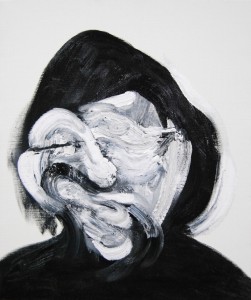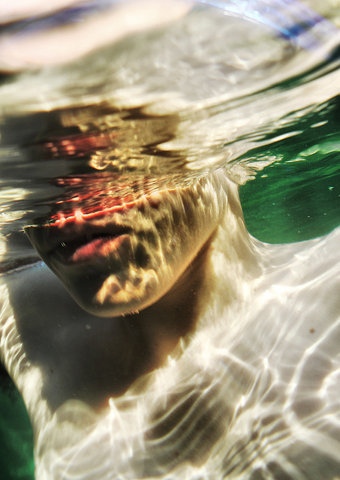Last night I had a dream: that the movies I had seen even in the womb were a prophecy. They were my future.
A child’s voice speaks these words, as if epigraph to Mike Hoolboom’s installation The Invisible Man. But where is this child, wise beyond years, speaking from, what place in space or time, or even the trajectory of his own life, to frame what we are about to see? Aside from all implications, we must remember that he is also speaking to us from film—that, for all we know, film is the place of his birth. As such, it is also the place of his demise, or the demise of the self in the prophecy film paradoxically programs for the individual: he is to become old by growing into the image of himself that cinema offers.
The image world of film is a world we already all share. Not merely entertainment, movies are patterns we grow into, but more than just as role models. As with the child already too old, they herald our future. At least this is a premise of Hoolboom’s installation, but it takes rearranging film to make this message obvious, to bring out its mythic structure.
Mike Hoolboom derives his films from a montage of images drawn from Hollywood film, found footage, and home movies. He pillages others’ products to produce streams of images stripped from their original narratives, but when the images are put back together according to another logic they now flow like a dream. (This dream logic is common to our reception of even the most realistic of Hollywood films and begins when the theatre lights descend.) In Hoolboom’s hands, film becomes an aqueous world shot through with light as if it was an embryonic fluid in which a form of consciousness comes to birth. Through his use of appropriated pictures, Hoolboom doesn’t produce an analysis of images, except perhaps as a poetics; he proposes a form of being. His is an ontology of cinema. But cinema also includes us, and this ontology becomes ours, so flows of images, flows of time, and flows of life are conflated in individual consciousnesses, the spectators that receive images and consume movies. This receptivity on our part to the film image lends credence to the phrase “a life in film” such that Hoolboom suggests, like the child, we too are born and die through the movies.
In the future each moment will be photographed, doubled. Our bodies will grow transparent. We will enter each other like walking through a door, until at last we come to an end of the picture world, a world where we are also pictures. Our movies and photographs, will they help us understand our last place, teach us how to die?
Hoolboom works in an essayistic rather than analytical mode. Onto a confabulation of images, he overlays his own meditative narrative on living and dying, appearing and disappearing, remembering and forgetting. These are no binary oppositions but states that pass into one another so that past and future, as well, may interchange and one can live backwards as well as forward. The image does not just record the past photographically, as if a memory; the image precedes us from the future as we advance in time to it. This is the sense in which the child said movies were prophetic of his future.
In film we encounter not the image of reality that takes us back to the world but the reality of the image that takes us out of ourselves. The image is something we grow into as the contour of our life; our life takes on the shape of an image, but not necessarily as a body. At the time of the birth of cinema, the philosopher Henri Bergson wrote that all matter is an aggregate of images. We do not perceive matter mentally as if a photographic representation; “if photograph there be, [it] is already taken, already developed in the very heart of things and at all the points of space.” Perhaps it took the invention of film to realize the heart of the matter. Based on the archive of a century of film images, Hoolboom’s The Invisible Man restores this condition to us. Stripped of its stories and narratives, film, our common picture world, is where matter dissipates and bodies disappear. Film is the doorway through which we communally pass insubstantially, as if we are always and only already nothing but images. We are what we behold.





